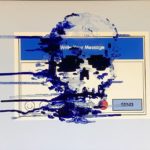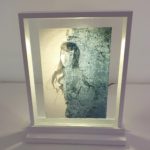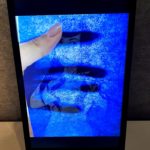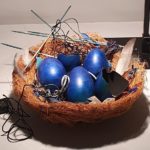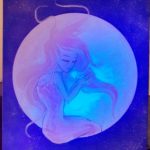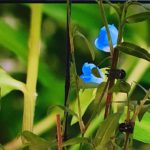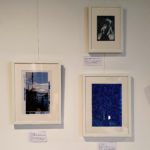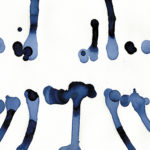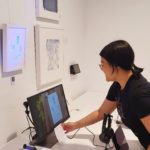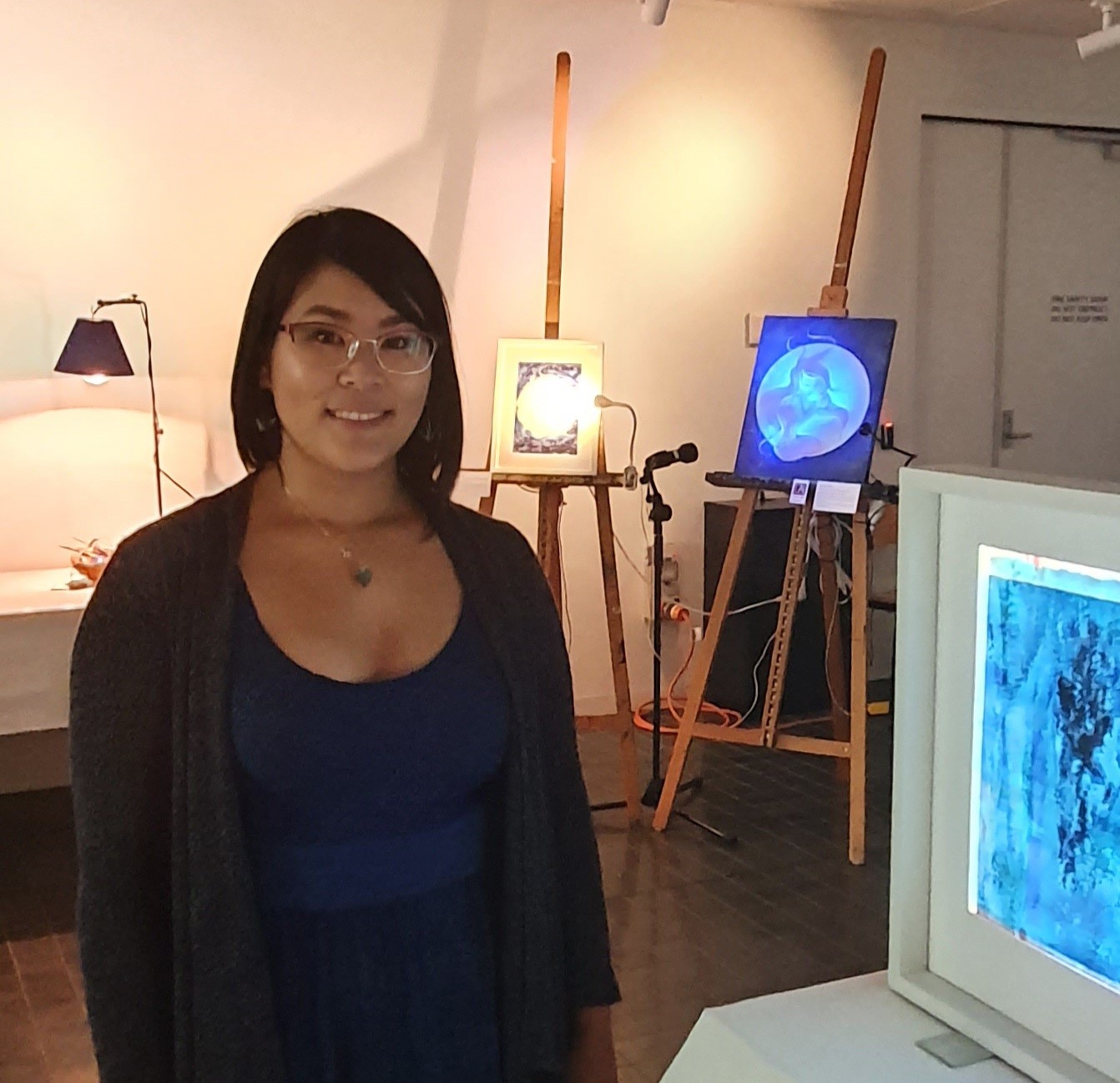
We have all heard – and perhaps suffered from – the blue screen of death. Sometimes we feel ‘blue.’ Yet these technological traumas and emotional states are rarely connected through research.
Higher degrees are diversifying, not only in terms of the diversity of our students, but the modes in which research can be conducted, presented and examined.
Annie Nguyen has submitted the first artefact and exegesis thesis in the College of Education, Psychology and Social Work. Her goal was to create a new concept, trope and mode of art. Her thesis was titled, From Tradigital to Shinkyuu Art: A fusion of analogue and computer-generated art summoned through the colour blue. To hear Annie talking about this research, please listen to her podcast: https://tarabrabazon.libsyn.com/annie-nguyen-and-arts-based-research-through-shinkyuu. View a sneak peek of the exhibition here.
Shinkyuu Art is an innovative arts practice formulated by Annie Nguyen fusing the old with the new – analogue and digital imagery. This exhibition showcases the artworks and studies created for their PhD submission. Developed through the colour blue, the artworks engaged old/new and analogue/digital methods and materials to create a fusion of colour and technique. Blue colour is rare as a natural pigment, and yet commonly viewed on digital screens. Shinkyuu Art pushes those boundaries of old vs new or analogue vs digital to present an innovative media beyond Tradigital art.
This innovative and unusual project also revealed an unusual and unexpected conclusion. The examination was an exhibition held on the Bedford Park campus of Flinders University. Even noting the complexities of Covid, two examiners travelled to Adelaide and assessed the Shinkyuu artefacts and the research she created through the exegesis.
 This thesis offers a model of and for our research futures. At Flinders University we now have doctoral modes that can challenge and enable the diversity and brilliance of our higher degree students.
This thesis offers a model of and for our research futures. At Flinders University we now have doctoral modes that can challenge and enable the diversity and brilliance of our higher degree students.
(Photo: Professor Rob Saint and Annie Nguyen)
We asked Annie to share some of her research journey and experience:
What lead you to your research and to undertake a PhD?
I was inspired by the colour blue and how rare it is in nature, particularly because I found the colour blue to be common on technology devices. In addition to this I had been developing innovative ways for creating digital/analogue blended art. Researching the impact of the colour blue on digital/analogue media was a natural transition for me.
What you are most proud of?
Accomplishing a series of works that demonstrate the boundaries and possibilities of Shinkyuu Art. The exhibition proved it was possible to achieve some unconventional setups.
Which aspects of the research most excite you?
The exploration and the learning! It was easy to go down a rabbit-hole with all the new information I was obtaining.
What advice do you have for fellow students contemplating artefact/exegesis inclusion?
Think about how the exegesis and artefact contribute and benefit each other in ways that a thesis-only does not, and if it is imperative to your research. For example, I needed to visually demonstrate my work through exhibition, and the exegesis complements those artefacts by analysing them. The artefact and exegesis may be two components, but they serve as one whole.
Are you working on new projects in this field and what is your future mission?
I am always working on new ways to formulate Shinkyuu Art! It has been a passion project of mine for years prior to the PhD, which I foresee will continue. I also utilise such processes within the Media Arts classes I teach. My dream would be to see Shinkyuu Art being implemented by other people, now the medium has been established.
During the exhibition, I was queried about the possibilities and complications of selling Shinkyuu Art. That is an area worth exploring in the immediate future. Does the artwork include two projectors, and if not, how do we present the work in another way? Can an app be created to recreate how phosphorescent pigment looks on an art print, so that it changes when the lights are on/off? Lots to explore!


